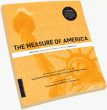I recently learned about two resources that seem pertinent to design activism. The first is an upcoming conference called “A Better World by Design” to be held November 7-9th at Brown University in Providence RI (USA). What they say
“A Better World by Design asks the question today’s designers, engineers, and economists should be asking. How can we use technology to improve the world? Hear answers from 25 world-class professionals and academics.”
The second resource is a new publication called The Measure of America: American Human Development Report 2008-2009. The report takes the traditional UN human development form that is typically used to assess progress in developing countries and applies them to the United States. It finds and illustrates striking differences in the levels of human well being among states, congressional districts, gender, race and ethnic groups.

This last resource picks up on a couple of themes I detected at the “Changing the Change” Conference (aimed largely at product design) that I attended last week in Turin, Italy. First, A number of the presentations looked at how we can redeploy our existing infrastructure in innovative new ways. The American Human Development Report, as an example, takes the existing framework of “human development report” and redeploys it in the context of a developed country to question “progress” in the American context. Conference examples included:
– urban hitch-hiking project in Belgium where riders and drivers sign up to a “hitchhiking service” in which cars are clearly labeled and riders can specify, for example, the gender of drivers and preferred destinations
– intergenerational housing in Paris where students who can’t afford central accomodation are paired with seniors who already have central accomodation but might otherwise be isolated (both covered in one conference paper).
– an examination of existing service infrastructures in india, such as rag pickers, street vegetable sellers, and so on, whose services could be updated and redeployed in the face of “hypermarkets” and “supermarkets” arriving in India (conference paper).
The second theme was about the changing relationship between so called “developed” and “developing” countries. Historically there has been a tendency to think that industrialized countries have the answers or have done development “right” (after all, they’re called “developed countries” aren’t they?). But now there is increasing recognition that developed countries actually got a lot of elements of development “wrong” in environmental and even human terms.
At the same time, even in the face of crushing poverty and exploitative trade (among other things), developing countries may in fact have some of the answers, concepts, or models that could benefit industrialized countries. It strikes me that deploying the model of the Human Development Report in the American context is a step in this direction. Conference goers seemed to recognize this direction and everyone seemed all too aware that as “developing countries” industrialize, their taking a “westernized path” would be catastrophic. The conclusion: we all need new development paths and they could come from anywhere.
There are a number of interesting papers available from the conference, including my own entitled, “Design as Activism.”